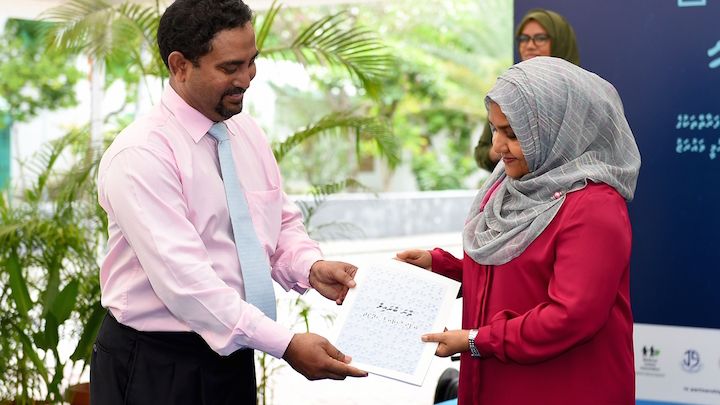Introducing Dhivehi braille is just the first step for blind literacy
First Lady Fathimath Ibrahim’s unveiling of a braille code in Dhivehi earlier this month was hailed as a milestone that would improve literacy among blind Maldivians. Advocates for the disabled are now urging the government to make braille accessible by introducing the code in schools, printing books in braille, and training teachers to teach braille.

22 Dec 2015, 9:00 AM
First Lady Fathimath Ibrahim’s unveiling of a braille code in Dhivehi earlier this month was hailed as a milestone in the efforts to improve literacy among blind Maldivians. Advocates for the disabled are now urging the government to make braille accessible by introducing the code in schools, printing books in braille, and training teachers to teach braille.
Qari Ahmed Rasheed, the creator of the code, told The Maldives Independent that he had been inspired by a blind professor who taught him Arabic at the Islamic College in Malé.
“I hope this code becomes a gateway to higher education for blind children, so that they can reach their full potential. In the future, there will be books written in Dhivehi braille in libraries. Visually impaired children can read, write, make poems and publish books.”
The braille code is “an important first step,” he said.
Become a member
Get full access to our archive and personalise your experience.
Already a member?
Discussion
No comments yet. Be the first to share your thoughts!
No comments yet. Be the first to join the conversation!
Join the Conversation
Sign in to share your thoughts under an alias and take part in the discussion. Independent journalism thrives on open, respectful debate — your voice matters.




